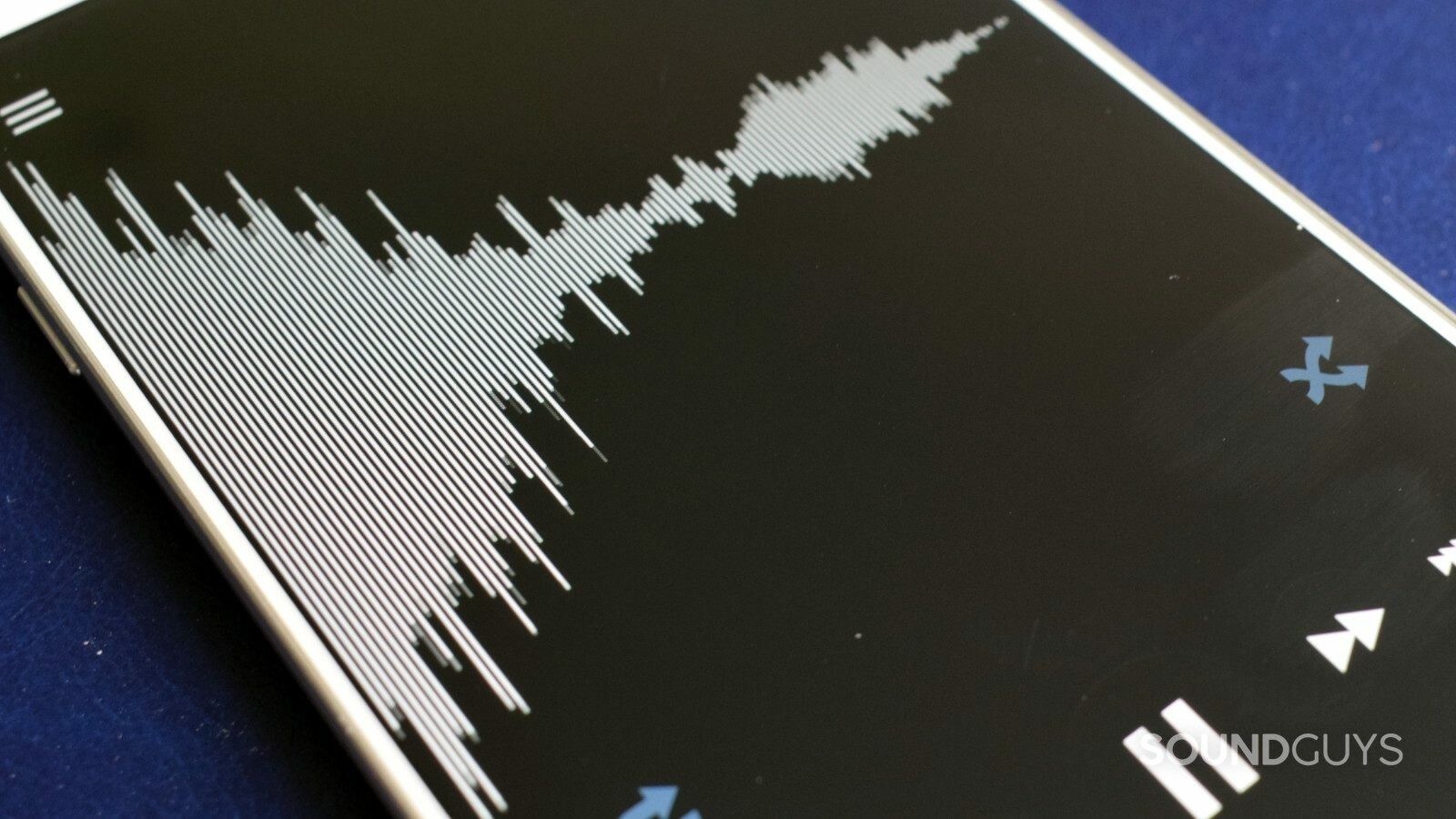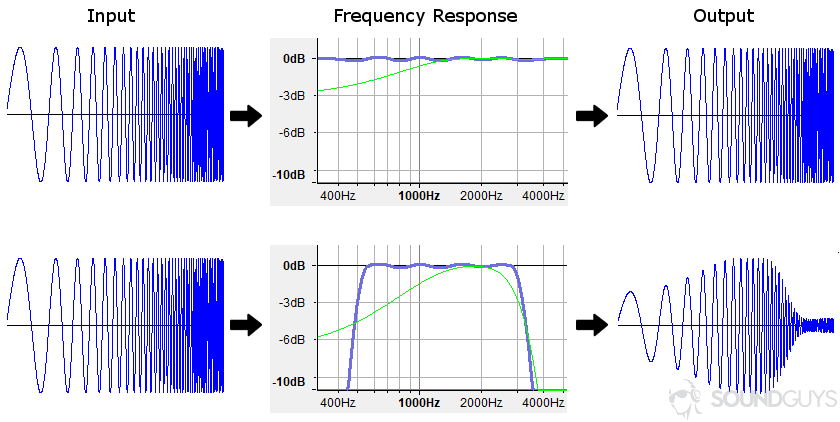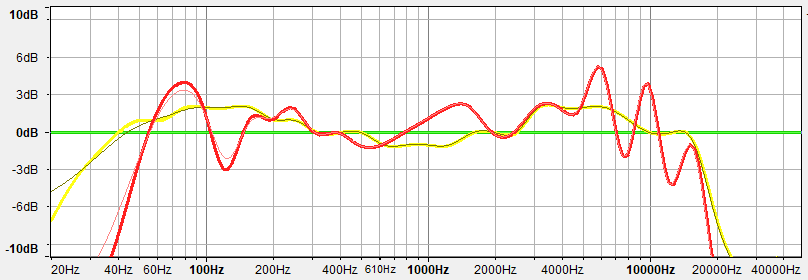All products featured are independently chosen by us. However, SoundGuys may receive a commission on orders placed through its retail links. See our ethics statement.
What is frequency response and how does it affect my music?
July 31, 2024

You’re probably aware of the term frequency response if you’ve hung around in audio circles long enough. It can crop up in pretty much any discussion, ranging from headphones and speakers to DACs and amplifiers and even room acoustics. Whether you’re familiar with the subject or if the term is brand new, here’s everything you need to know about frequency response.
Editor’s note: this article was updated on July 31, 2024, to update formatting and linking.
What is a frequency response?
A frequency response is a visual representation of how well an audio component reproduces the audible range of sound. It’s usually presented as a line graph, with the device’s output amplitude on the y-axis (in decibels) plotted against frequency on the x-axis (in Hertz). A fixed amplitude sine wave is swept through all the frequencies of interest while an analyzer tracks the output to measure the frequency response. In most cases, the ideal system will produce the same amplitude at all frequencies, so the output equals the input. This is often called a “flat” frequency response because the graph produced is a straight, horizontal line.

In other words, an ideal frequency response does not change the relative levels of the bass, middle, or treble from the source. By comparison, if you’ve messed around with any music app’s EQ settings, you might have seen a non-flat EQ setting that boosts bass, cuts treble, etc. So if a component (such as a headphone driver) doesn’t have a flat frequency response, you may hear more or less of particular frequencies than were present in the original signal. In extreme cases, this can ruin the listening experience.
Our hearing ranges from very low frequencies, starting at 20 Hz, to very high frequencies at around 20 kHz (20,000 Hertz), though an individual’s hearing will fall between these two extremes. In a musical sense, we often see this split into bass, middle, and treble sections. These aren’t fixed definitions, but bass accounts for frequencies between 20 and 300 Hz, mid is 300 Hz to 4 kHz, and treble counts as anything above 4 kHz, very roughly speaking.
Problems obtaining a flat response

Achieving a perfectly flat frequency response across the entire audio signal chain varies in difficulty depending on what kind of component we’re talking about. For example, it’s a big challenge with headphone drivers and speakers, where mechanical properties, electronics, and acoustics combine to produce non-linearities that impact the sound. Impedance matching between amplifiers and reactive speaker components and even the acoustics of your room affect the final frequency response.
You’ll often see audio specifications quote a range of frequencies, such as 20Hz-20 kHz, followed by the variation in the frequency response quoted in decibels, such as +/- 6 dB. This simply tells us the maximum deviation at any point between the given frequencies, so it doesn’t tell us anything about how a product will sound.
Each component in the signal chain should ideally have a flat frequency response so that the sound passes through unaltered. But the reality is that many components don't offer ideal performance.
Generally speaking, +/- 3dB is considered the lower limits of a change you can reliably hear — so more minor deviations of 1 or 2dB here, and there isn’t anything to be concerned about. But deviations 3dB or above will more likely cause some perceivable alteration to your music. Resonant frequencies, which appear as pronounced spikes or bumps on a frequency chart, can be particularly problematic as specific musical notes and tones become exaggerated or get masked by the resonance.
Therefore, a spec like 20Hz-20kHz +/- 3dB is insufficient; it’s better to see where these swings in emphasis occur and how they are distributed. A smooth frequency response is better than a highly variable one, with flat usually considered the ideal.
While electroacoustic components can exhibit wide variations in frequency response, DAC and amplifier components should be flat.
Regarding DACs, the output should always be completely flat across audible frequencies, even in low-cost designs. The conversion from digital to analog in hardware is a straight sampling conversion before filtering out the noise at frequencies well beyond our perception. There aren’t any mechanical or acoustic problems to worry about. Amplifier circuits are also pretty interchangeable as far as audible performance goes.
Fourier analysis and your music

A non-linear response will alter the way our music sounds. However, this isn’t just about more obvious concepts like bass and treble; it also impacts the sound quality of every instrument in the mix. To understand this more subtle aspect of how a non-linear frequency response can affect what we hear, we need to turn to Fourier analysis.
In a nutshell, Fourier analysis and the Fourier transform reveal that a complex waveform can be expressed as the sum of a series of sine waves of differing amplitudes. So, a square, triangle, or any other wave shape that appears in the time domain can be represented by multiple different individual frequencies of varying amplitudes in the frequency domain. This includes the waveform shapes created by musical instruments, ranging from sharp beats of a snare drum to fat square wave synthesizers.

In musical instruments, notes are made up of harmonically related sine waves, occurring at odd and even multiples of the fundamental note frequency. So, for example, if you play natural C on a violin, that sounds the fundamental frequency of 261 Hz, plus some second harmonic at 522 Hz, third at 783 Hz, fourth at 1044 Hz, and so on, with diminishing amounts of level. Other instruments have differing relative harmonic content, which creates their unique sounds. The diagram below shows the frequency relationship differences between the sound of a piano and a violin to serve as an example.

Why does this matter? Returning to frequency response and filtering, we can now see that a non-flat response alters the overall representation of our music and can also change how individual instruments sound. Even if a frequency response graph doesn’t present significant bass or treble issues, the smaller nonlinearities at specific frequencies can alter our perception of the tonal qualities of instruments.
Some general rules of equalization are that decreasing an instrument’s fundamental frequency produces a less powerful sound while increasing it adds “depth.” Similarly, reducing an instrument’s harmonic content leads to dull and unnatural sounds, while boosting harmonics increases “presence” but can eventually sound overly harsh. Taking this one step further, boosting and cutting different instrument frequencies may even end up masking or amplifying the sound of other instruments in the track. So, a nonlinear frequency response can undo all the hard work the engineers will have put into carefully mixing and mastering a track.
Why frequency response is important

By the traditional standards of HiFi, an accurate audio system takes an input signal and outputs it without changing it. This includes components ranging from the source audio file to digital processing and components like a DAC to the amplifier and speakers. Frequency response is just one part of this equation, but one that significantly impacts how the output sounds and is coincidentally relatively easy to measure.
Frequency response isn’t just about whether there’s too much bass, mid, or treble coming out of a system. It can also subtly affect the tonal balance of instruments within a track, potentially coloring and ruining our listening experience. A perfectly flat, ideal response isn’t possible with every component, but today’s higher-end technology can come close enough that a human could never tell.
If our goal is to listen back to music in as pure a form as possible, we have to pay attention to frequency response. It can also be a handy tool to EQ your way out of less-than-perfect hardware.